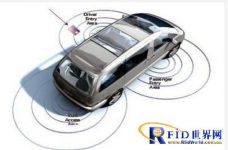
Vehicle identification RFID management system
[ad_1]
project description:
The automatic identification management system for vehicles uses RFID (radio frequency) technology, image recognition technology, data encryption technology, multi-sensor information fusion technology, computer and network technology and other international and domestic leading technical means, using RFID electronic tags installed on vehicles and traditional The license is the information source, and the system management platform and data server are the operating center. Through two inspection methods, the handheld inspection system or the fixed inspection system carried by law enforcement officers, an alarm will be provided immediately when abnormal conditions are found, and the inspection information will be uploaded to the system management in time The platform forms a dynamic, three-dimensional, rigorous and accurate intelligent automated traffic supervision and inspection network, so that illegal vehicles such as counterfeit vehicles, unlicensed vehicles, unlicensed vehicles, cloned vehicles, and smuggled vehicles have no place to hide and make traffic violations. Cars, hit-and-run cars, arrears cars, scrap cars and other problem vehicles are invisible, which greatly reduces the cost of traffic inspections, improves inspection efficiency, and realizes targeted and humane civilized traffic supervision, which is to build “harmonious traffic.” Powerful weapon.

Advantages of vehicle RFID management system:
◇Information Security Technology
It can effectively prevent the memory information from being cracked or tampered with, and ensure the security of the information in the vehicle’s RFID electronic tags.
◇Anti-dismantling function
The electronic tag adopts the anti-dismantling function, which completely avoids forgery by criminals.
◇Label maintenance-free
Since the tag adopts UHF passive technology, the tag does not need to actively emit electromagnetic waves, so the tag design is simple and easy to use, and does not require maintenance in the actual use environment.
◇”Dual recognition” technology
The “dual recognition” technology can accurately capture the physical characteristics and electronic information of the vehicle, and quickly make an intelligent comparison with the system database, and immediately issue an alarm for abnormal conditions to ensure that various illegal vehicles and problem vehicles are found on the spot.
◇RFID signal technology
RFID signal technology effectively avoids adjacent signal interference and successfully solves the problem of adjacent road and car following interference. Image recognition and RFID radio frequency identification are carried out simultaneously to ensure that the system can effectively inspect the vehicle.
◇Data transmission technology
The system adopts a secure wireless or wired network transmission method to realize data synchronization between the management platform and various inspection systems.
◇All-weather inspection technology
The technology can effectively solve the difficulty of image recognition and signal reception under severe weather conditions such as dark night, low-light environment, rain and fog, and basically realize all-weather inspection.
◇All-round inspection methods
Whether it is a moving vehicle or a parked vehicle, whether it is an illegal vehicle or a vehicle that violates regulations, all-round inspection and tracking can be realized.
◇Classified authorization and internal monitoring methods
Combined with the monitoring of the information input and output of the lower-level administrators and the audit data by the upper-level administrators, it can effectively avoid the violations of internal staff such as guarding and stealing.
◇Humanized design
The system uses an alarm and displays relevant information immediately when abnormal conditions are discovered, and a default release design for legal vehicles, thereby improving the efficiency of inspections and achieving civilized law enforcement.
◇Data query function
Use multiple methods such as alarm type, license plate, ID number, and date for flexible query, including single and combined query.
[ad_2]



